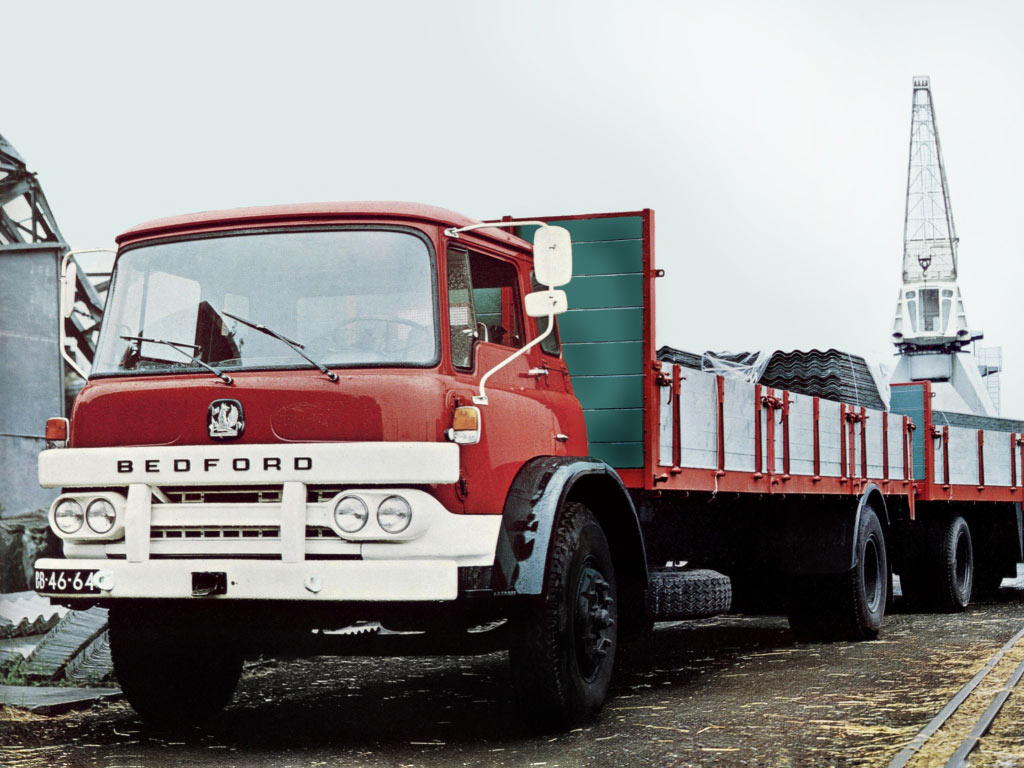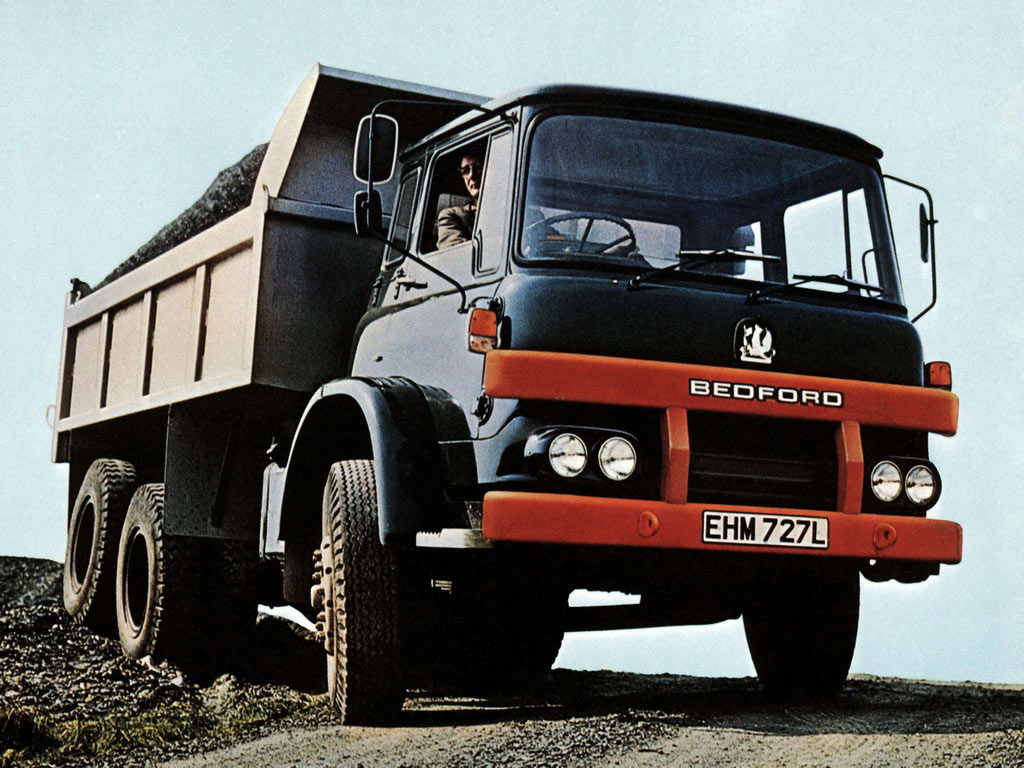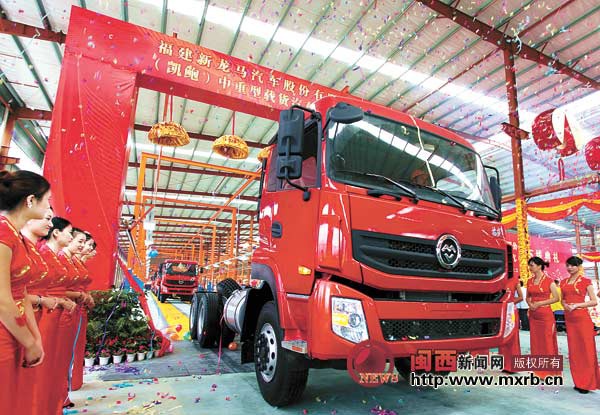Bedford
Commercial
Bedford KM
When Bedford set out to develop the KM none of the existing TK running units were ‘manenough’ to enable the company to bid for a share of the 16-ton GVW fourwheeler market brought about by new UK Construction & Use Regulations introduced in 1964. Bedford engineers and product planners had to develop all-new in-house mechanical units, the only exception being the gearbox which was a Turner 5-speed. A new diesel engine, the 466cu.in (7.63 litre) ’70 series’ with 135bhp (net) at 2800rpm, was developed as well as a new 10-ton spiral bevel axle to suit 2.5m wide models. This had a slant housing to achieve maximum ground clearance and was, in this respect, reminiscent of the old Bedford WT rear axle of the 1930s.
Everything about the KM was completely new except for the cab which was adapted from the standard TK unit. A new design of hydraulically-damped, sprung driver’s seat was introduced on the first KMs. As an extension to the TK range, the KM embodied many similar design features. When originally launched, in 1960, the TK was hailed as a sensational advance in truck design, especially from the driver’s viewpoint. Next to the average medium truck of the period it offered exceptional ease of entry and exit, a walk-through cab, superb all-round vision and state-of-the-art instruments and controls.
Engine access was given a lot of thought and the ‘cab-ahead-of-engine’ TK’s clever lift-up side panels provided sheltered access for mechanics to reach the essential parts of the engine. Clever though the idea was it soon became the subject of criticism, especially when Bedford introduced bigger engines and, eventually, the 16 ton gross KM. Getting at the front of the engine was a tight squeeze and what the TK, and even more so the KM, really needed was a tilt cab.
To achieve optimum axle loadings the front axle of the KM was set back 4 inches so the cab wings had to be re-designed. They were also wider to meet the 2.5m width. Engineers were hard pressed to maintain adequate engine access with the set-back axle and larger tyres so a dropdown wing rear section was introduced.
When launched on September 9th 1966, the KM range included eight models from 14 to 16 tons gvw. The shortest, 120in wheelbase, KMT 14-ton gvw tipper was quickly seen as a mistake and was dropped within a year as it could hardly carry any more than the cheaper KHT. This left two tipper chassis, the KMR and KMS. There were three truck wheelbases of 174in (KMM), 208in (KML) and 224in (KMH). The KMR was on a 132in wheelbase while the KMS was on 158in. The KMR was limited to 15 tons gvw on account of its wheelbase being less than 12ft. From 1972 when axle spread limits were relaxed, it was uprated to 16 tons. Three years later it was replaced by a new chassis on a 148in wheelbase. For this, Bedford resurrected the KMT designation.
There were two tractors plated at 22 tons but these could be uprated to 24 tons. The KMB was on a 109in wheelbase while the KMA was on a 120in and had its front axle set 4in (102mm) further forward than other KMs. By 1967 Bedford was working on its own 6×2, launched on September 13th 1968 as the KME (or HRX3 in alpha-numerical terms). It featured a 4-spring bogie with offset slipper-type balance beam to bias the load on to the drive axle in unladen condition. Factory-built six-wheelers were all equipped with the ‘de-Luxe’ cab which had a padded dashboard, height adjustable driver’s seat and improved trim.
In 1972 Bedford engines underwent numerous improvements and the 381cu. in ‘60’ series was dropped, replaced by a de-rated version of the ‘466’. There were in fact three power ratings for the 466 at 116, 133 and 136bhp. The latter continued to be fitted in KM models while the others went in the KH and the KG. When Bedford launched its ‘500’ engine in 1975 this replaced the 466 in the KM.








































